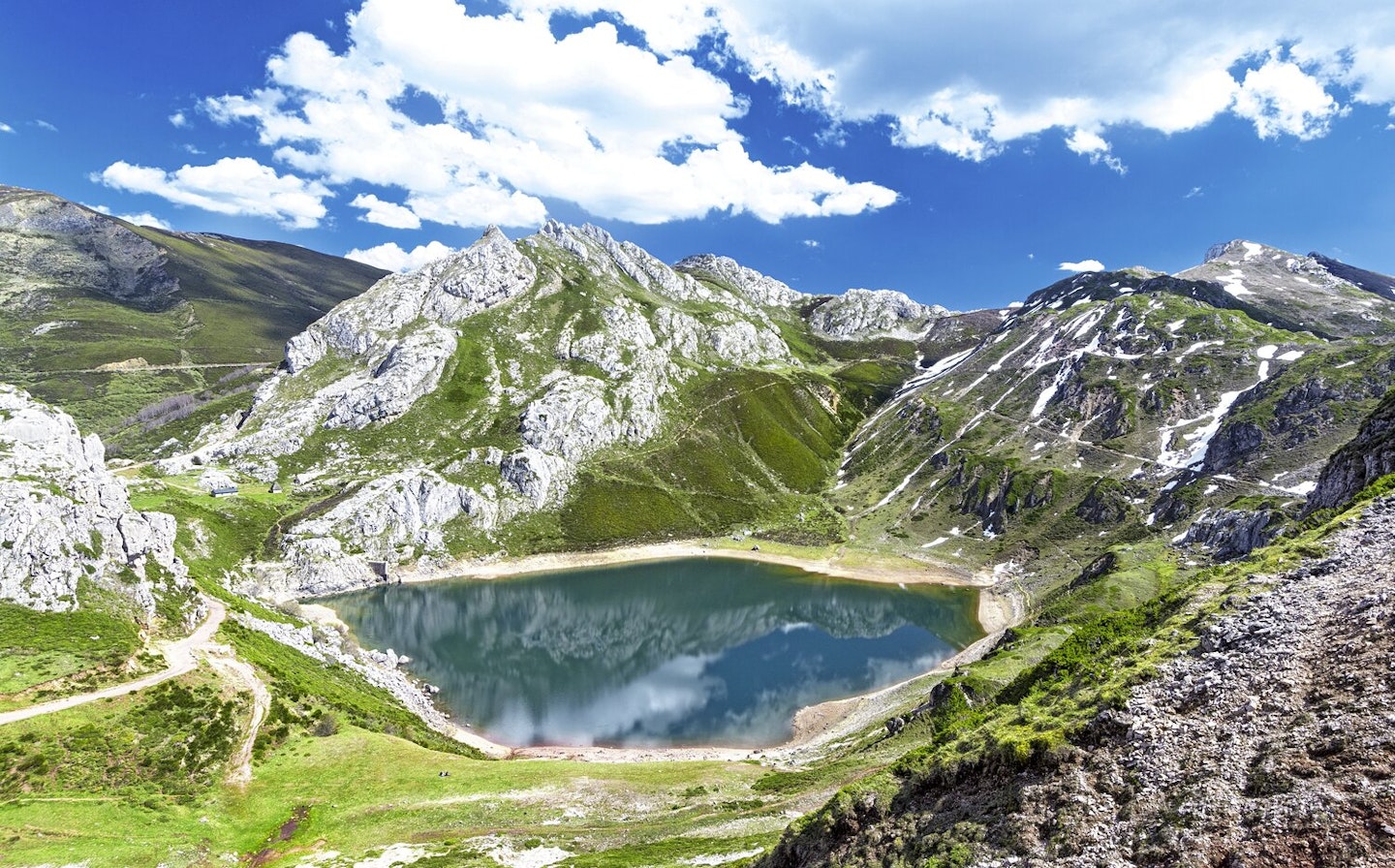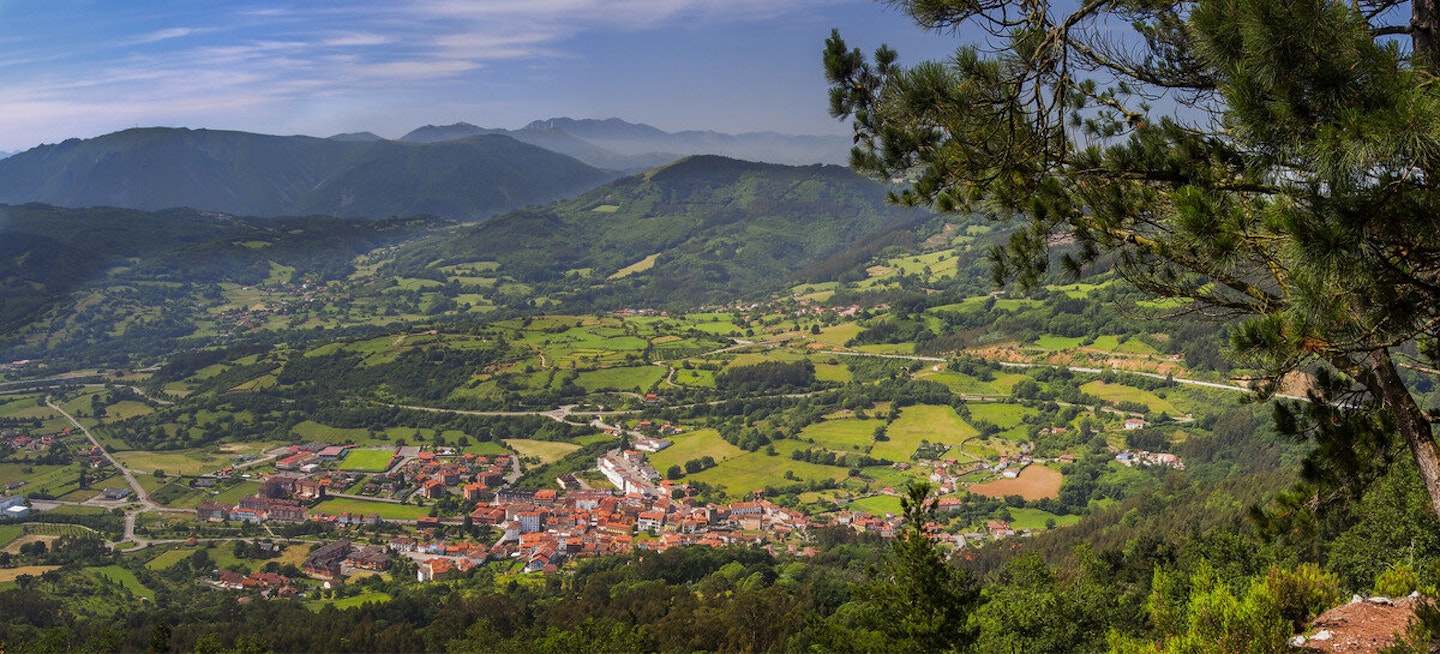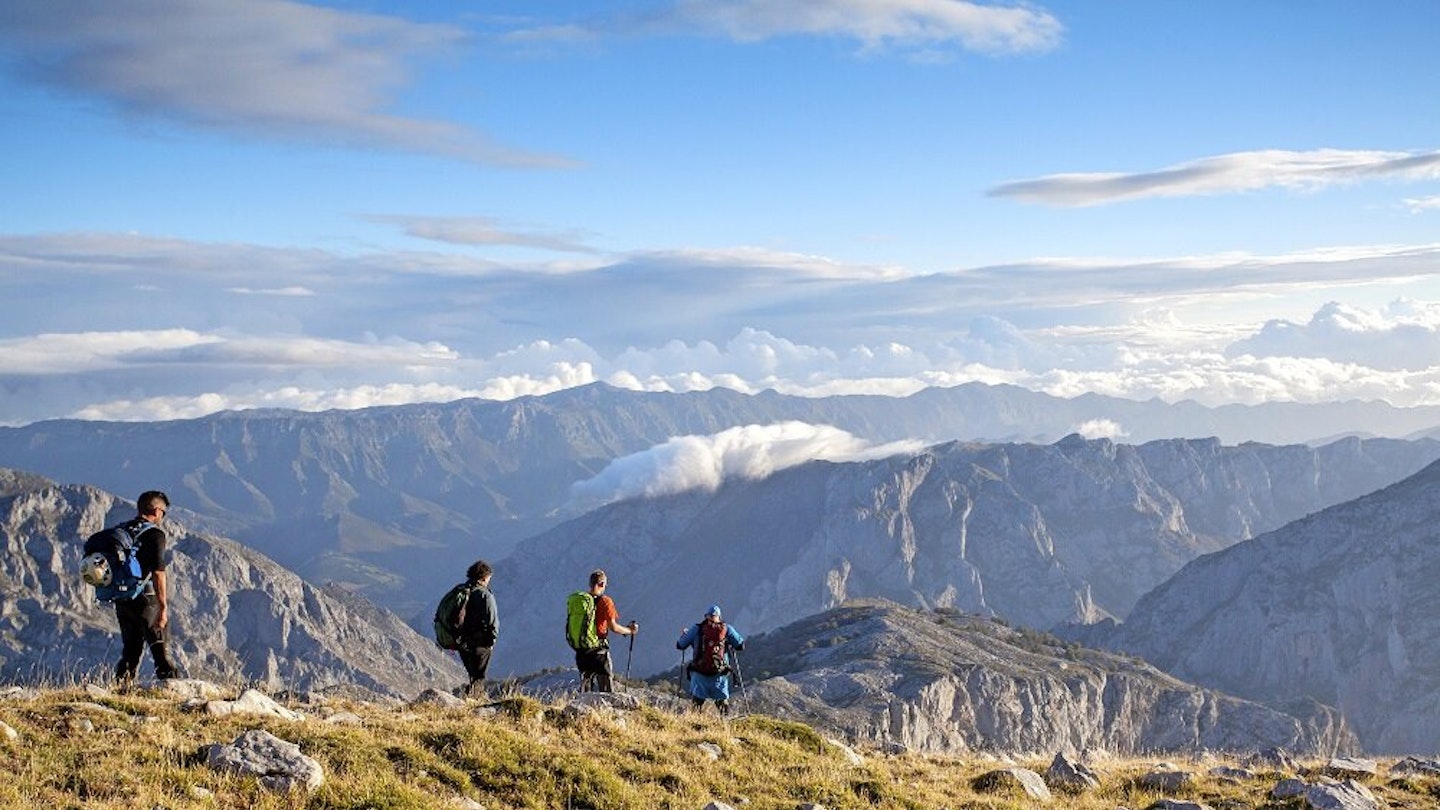There are already hundreds of reasons to discover the Spanish region of Asturias as a walking destination, from its magnificent mountains and famed national parks to its rare wildlife habitats and unique UNESCO Biosphere Reserves. Little wonder the region’s official subtitle is the natural paradise. But Asturias also sits on two of the classic routes of the Camino de Santiago, and 2021 is set to be a very special year for the world’s most famous pilgrimage walk. So there has never been a better time to plan an adventure in this infinitely varied region. Lying in the lush, fertile landscapes of north-west Spain, with the city of Oviedo/Uviéu at its heart, Asturias is perhaps best known to walkers for the Picos de Europa National Park. This extraordinary mountain landscape is home to soaring peaks such as the Torre de Cerredo and the incredible Urriellu (AKA Naranjo de Bulnes), as well as the stunning Ordiales Scenic Balcony and beautiful lakes like Enol and Ercina. But the Picos de Europa is just one of seven UNESCO Biosphere Reserves, amounting to 10,000 square miles – that’s almost a quarter of the entire region of Asturias.
The other Biosphere Reserves are…
Fuentes del Narcea, Degaña and Ibias Natural Park
Home to the Muniellos Forest, the largest white oak grove in Europe. The basins of the Narcea and Ibias rivers form deep valleys and high peaks. Look out for the elegant cortinos, which keep beehives safe from the region’s magnificent brown bears.
Ubiñas-La Mesa Natural Park
Hill country where fantastic wildlife finds a safe haven, including bears, wolves, capercaillies and golden eagles. You can walk to picturesque villages such as Bermiego, perched on a hillside, with its legendary and ancient yew tree, and to the spectacular gorge of the river Val de Sampedro.

Ponga Natural Park
Home to the Peloño forest, a beech forest that becomes a miracle of nature in autumn. In the Moandi pass, the rivers n ADVERTISEMENT FEATURE Ponga and Sella form imposing gorges, while mountain lovers can enjoy wellknown trails such as Picu Pierzu, Valle Moru, Senda del Cartero and Foz de los Andamios.
Redes Natural Park
Home to a mighty waterfall – Tabayón del Mongayu – and breathtaking landscapes such as braña de Brañagallones, the Redes Forest and Lake Ubales. It also boasts great hiking trails such as the Alba, and is famous for its woodcraft; look out for the local madreñeros (clog makers).
The amazing Camino de Santiago But on top of all these rich and varied landscapes, there’s an even more beguiling reason to come to Asturias in 2021, and it’s connected to the two famous routes of the Camino de Santiago which pass through the region: the Camino Primitivo (Original Way) and the Camino del Norte, the Northern Camino or Coastal Way. Both share awesome green and fresh scenery with a lovely temperature that mean you can walk all day long with no worries about too much sun exposure and avoiding any midday heat. This is why they call it the natural way.
The Camino routes have a special magnetism in any year, but even more so in what is defined as a Holy Year: when the Feast of St James (25th July) falls on a Sunday. The last Holy Year was 2010, and the next one is 2021. St James is the focal figure of the Camino; his tomb in the cathedral of Santiago de Compostela is the objective of all the Camino routes. During a Holy Year, special celebrations are held along the Camino routes, and pilgrims who have walked to the city can enter the cathedral through the Holy Door, which is only opened in Holy Years.

Asturias feels a special bond with the story of the Camino, because the ninth-century Asturian king Alphonso II is regarded as the first person to have ever made the pilgrimage. Having been told that St James’ tomb had been discovered in what was the then small town of Compostela, the king set out to see it for himself, along what has become the route of the Camino Primitivo (Original Way). His journey thus began a pilgrimage tradition which has survived – and thrived – into the 21st century.
The Camino Primitivo begins from the cathedral of San Salvador in Oviedo and heads west, passing charming little villages packed with legends and traditions, over the course of seven days. After that the trail leaves Asturias to continue on towards Santiago. The Northern/Coastal Way begins at Irún near the French border, then heads west across the entire northern coast of Spain. It takes in 282km of Asturian coastline, where beautiful bays, sandy beaches and clifftops provide the perfect backdrop to an unforgettable pilgrimage. And there are variations which allow the curious pilgrim to explore the wild, rugged beauty of Asturias while still keeping their feet pointed westwards. Along with the El Salvador Way, which connects the city of Leon with Oviedo, the Camino routes across Asturias bring pilgrims through the heavenly scenery and ancient heritage of this beautiful part of Spain.
Each route is well served by a network of welcoming hotels, hostels and pilgrim lodgings, all marked with the ever-present scallop symbol of the Camino. The Asturias tourism board goes further than most, with helpful websites dedicated to helping you plan the perfect itinerary. So, with its supreme variety of landscapes, steeped in the traditions of the world’s favourite pilgrimage, a journey through Asturias is a walk like no other.
And right now is the perfect time to plan ahead for the walk of a lifetime.
Useful links
For general information about the region, visit www.asturiastourism.co.uk
For specific information about pilgrim lodgings, go to [www.asturiastourism. co.uk/StJamesWay/PilgrimsLodgings ](http://www.asturiastourism. co.uk/StJamesWay/PilgrimsLodgings )
For general information for pilgrims, visit www.peregrinosporasturias.com
You can also download guides for the Camino routes through Asturias at[ www.elcaminoconcorreos.es// www.elcaminoconcorreos.esnd baggage transfer services for a more luxurious pilgrimage at www.elcaminoconcorreos.es
For breaks in the cider-producing region, visit www.lacomarcadelasidra.com

